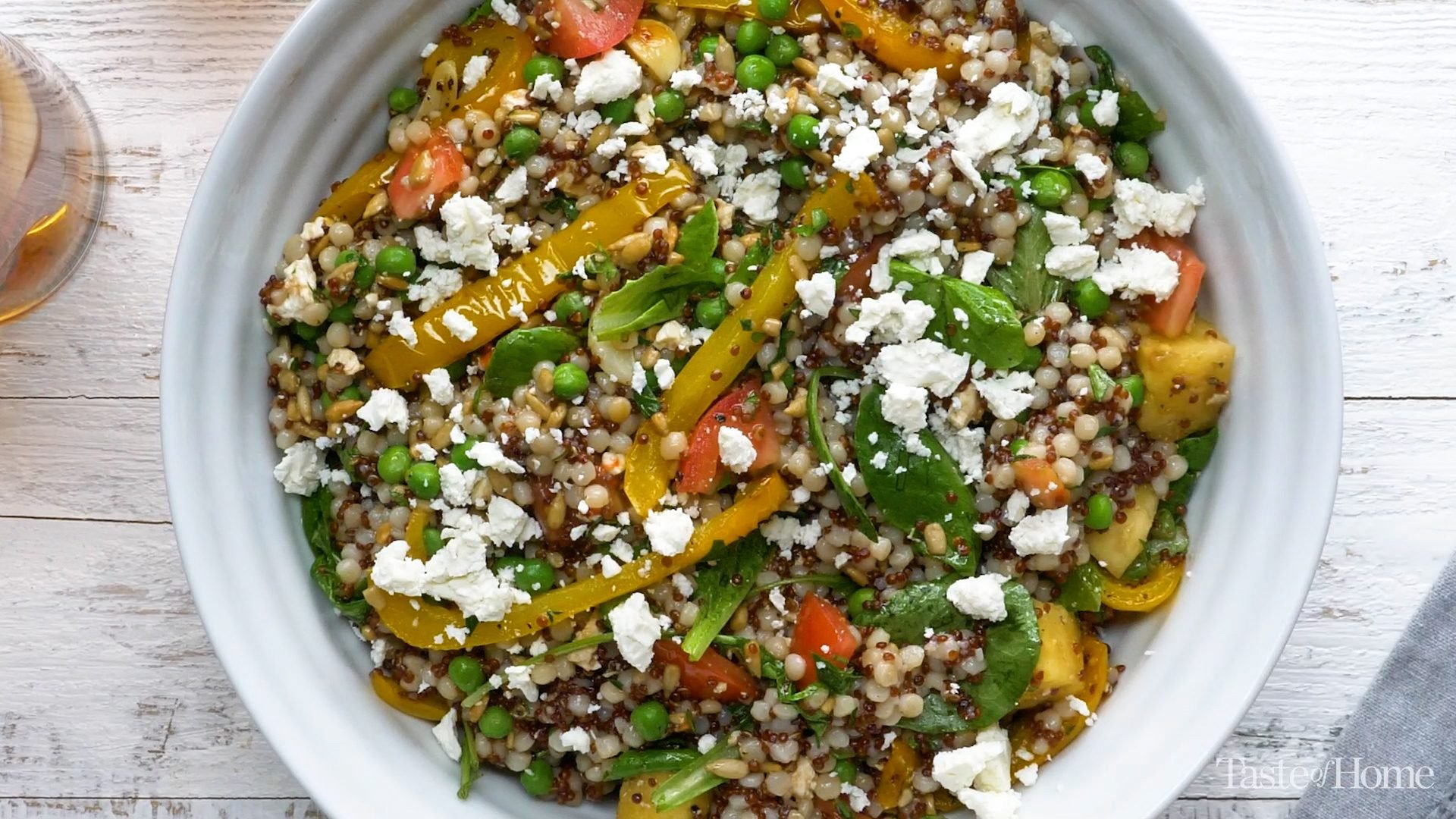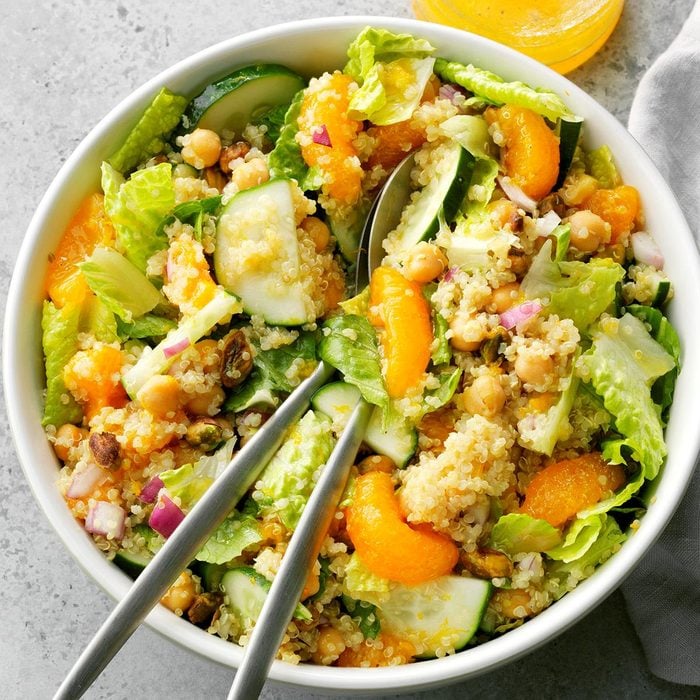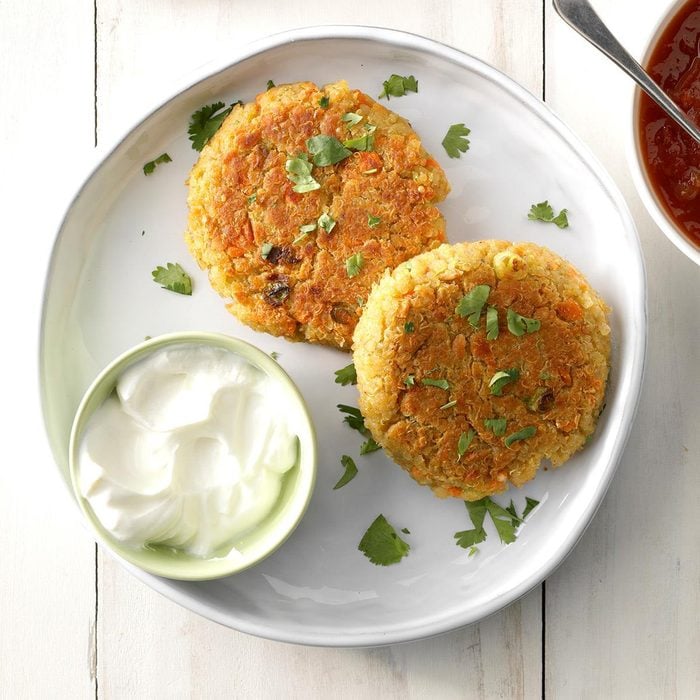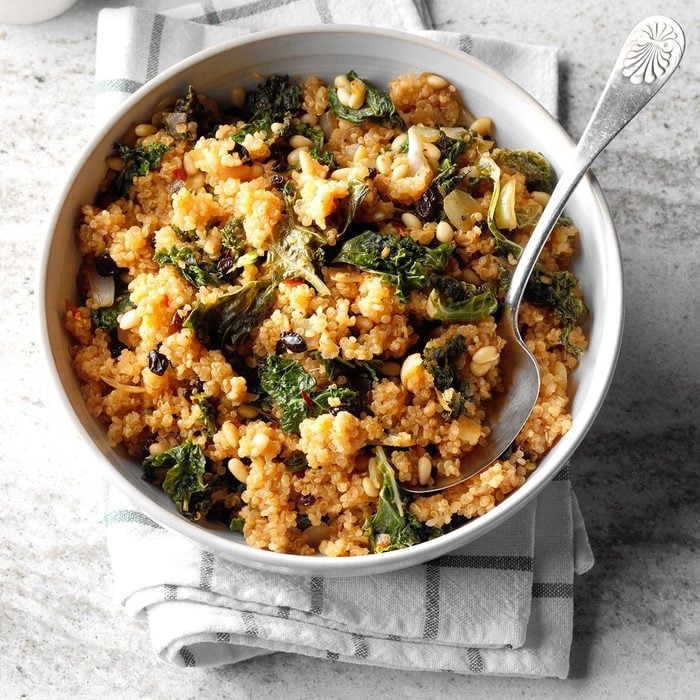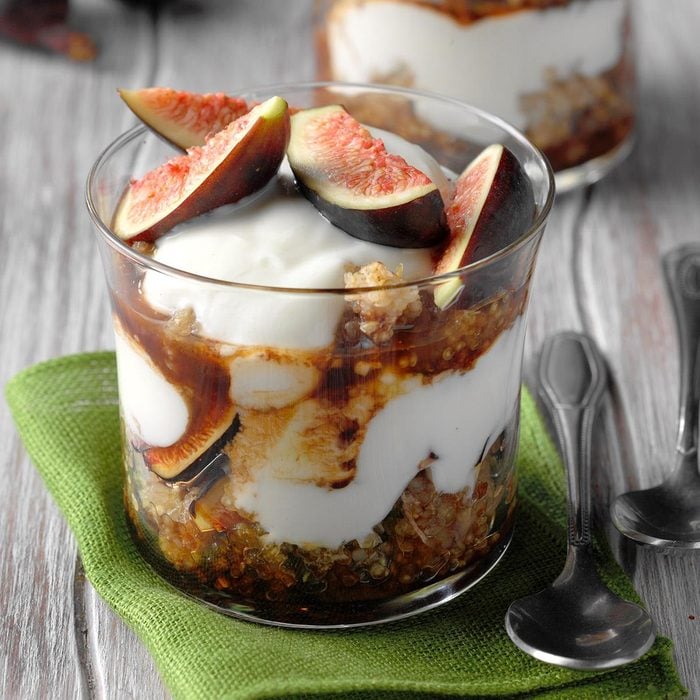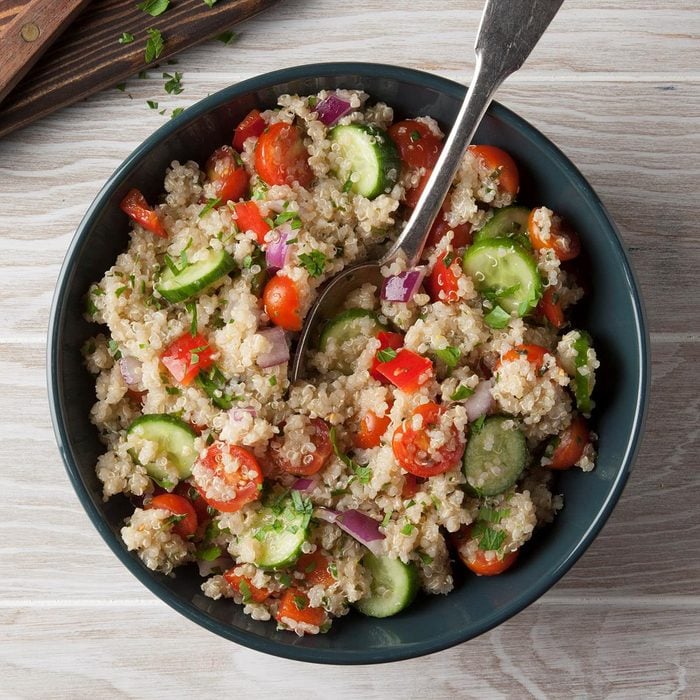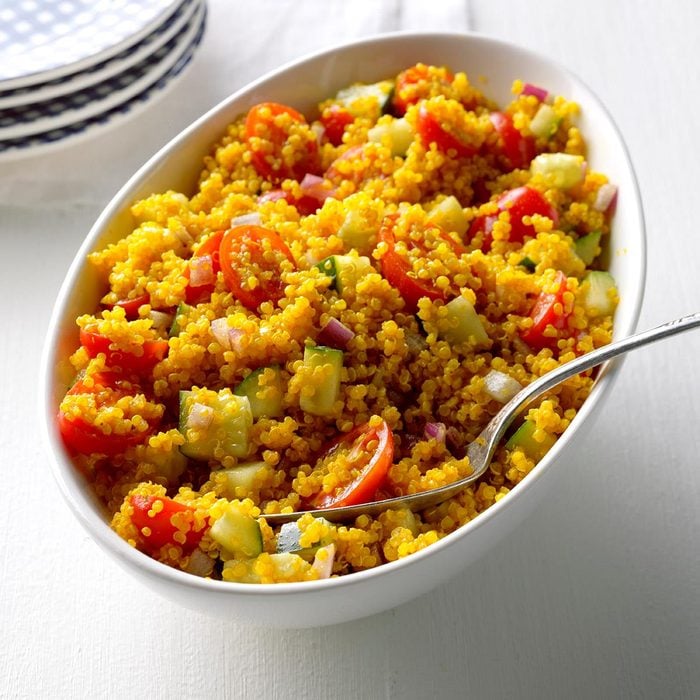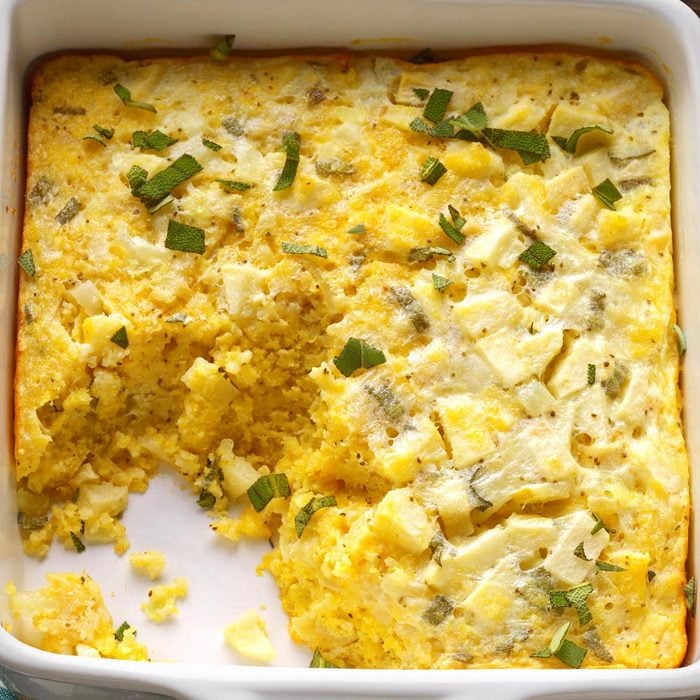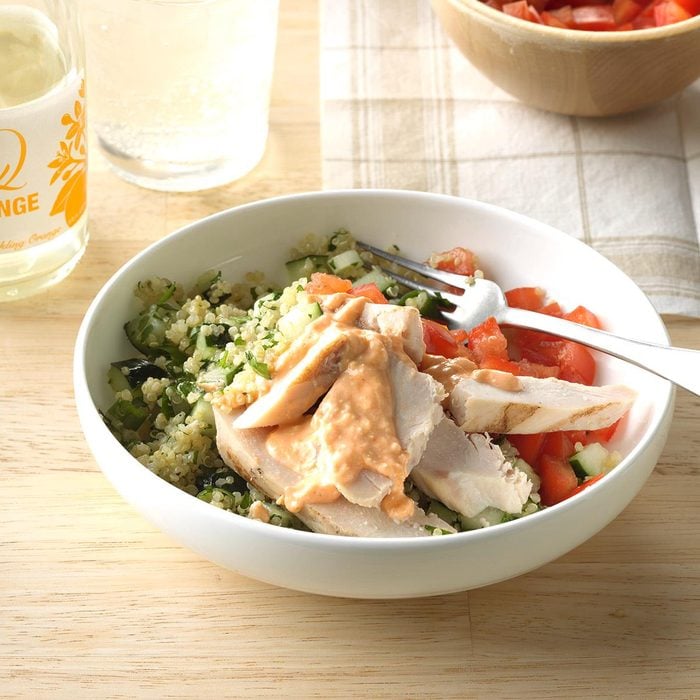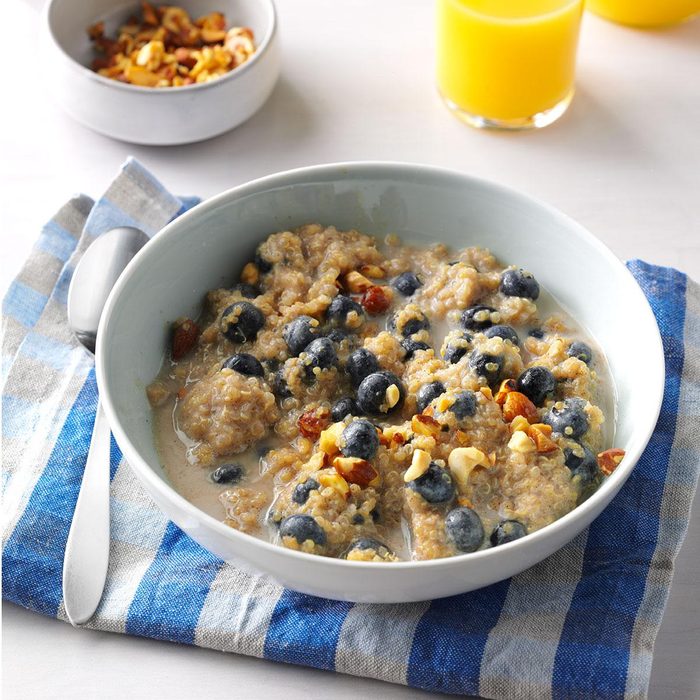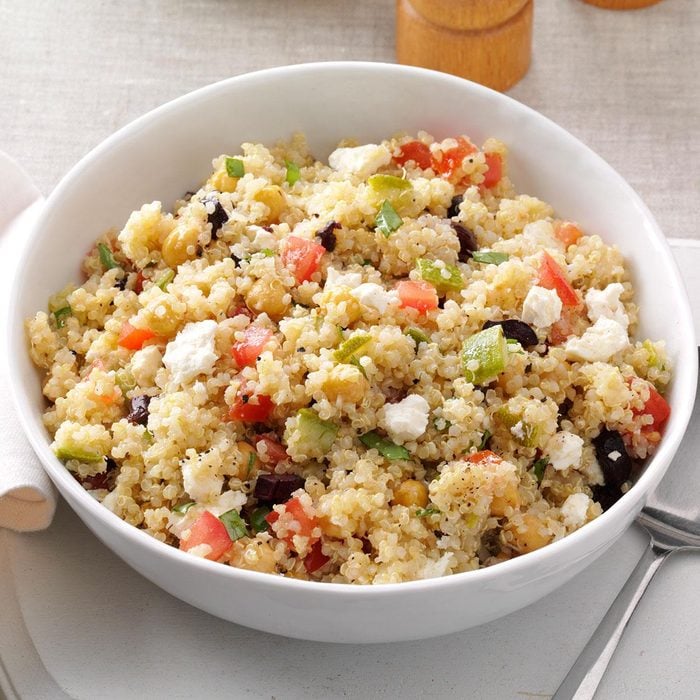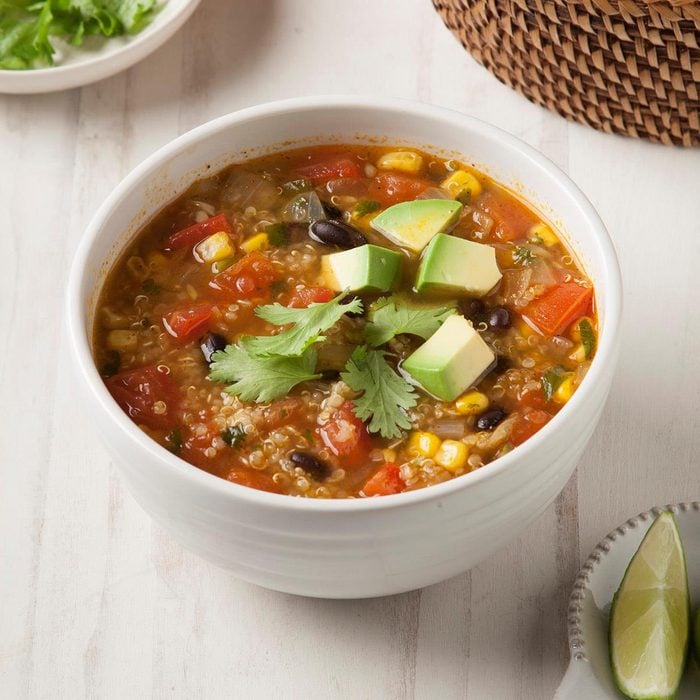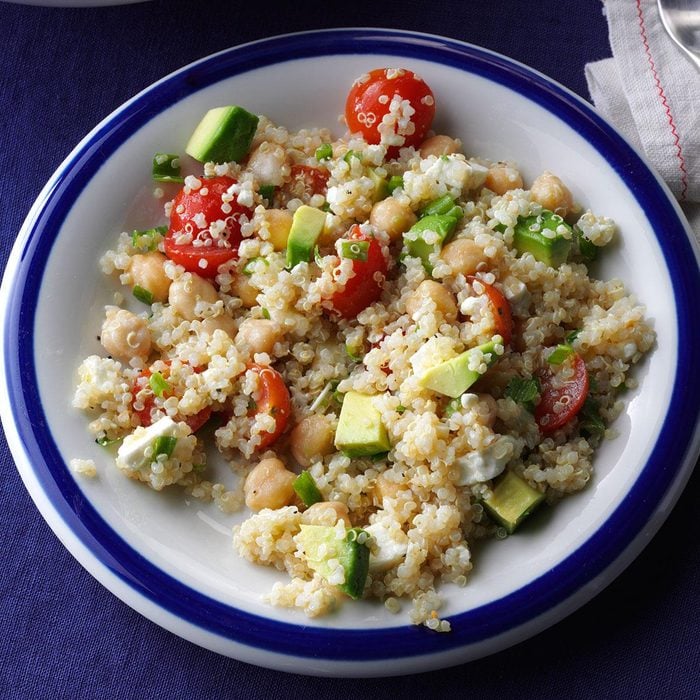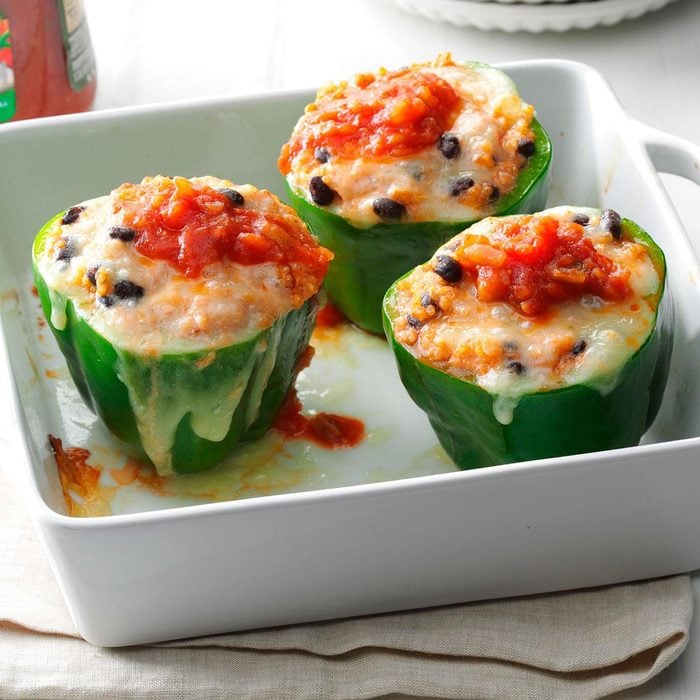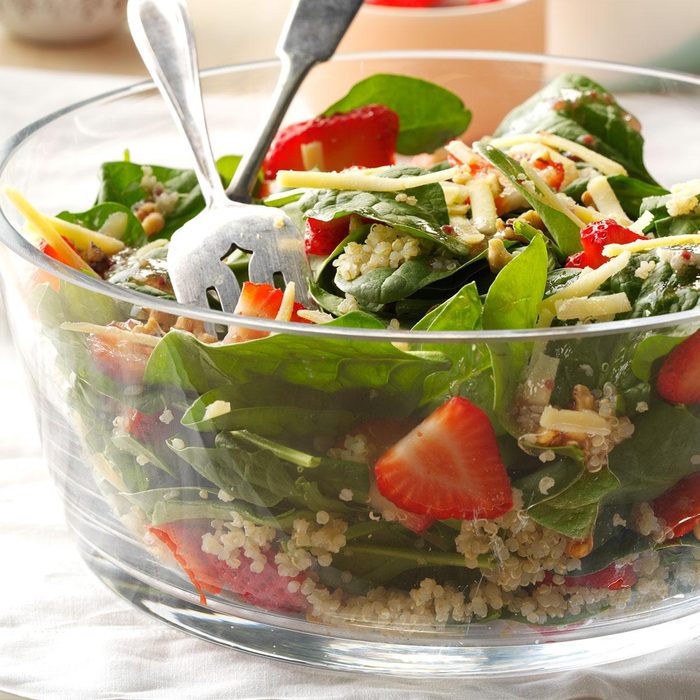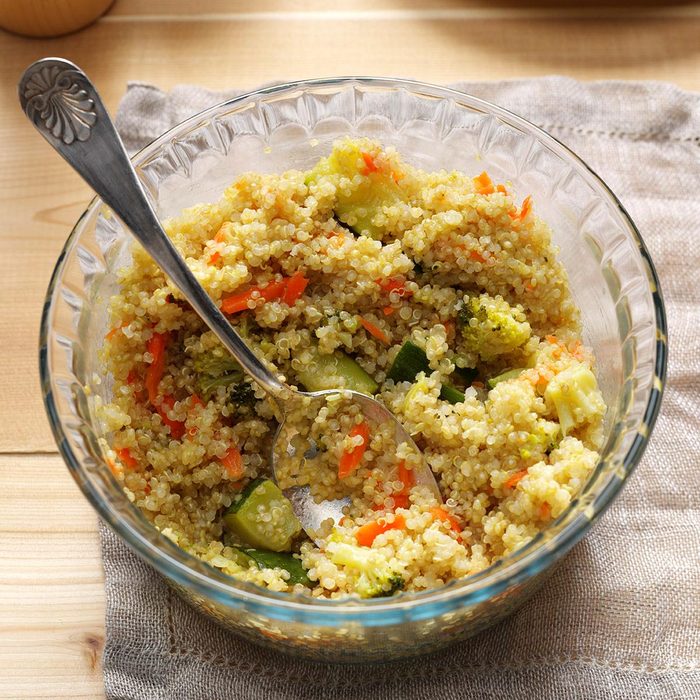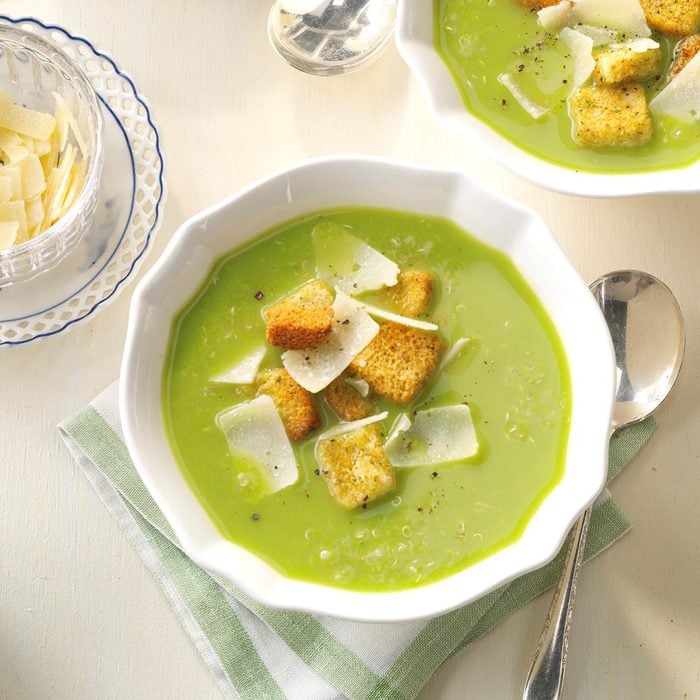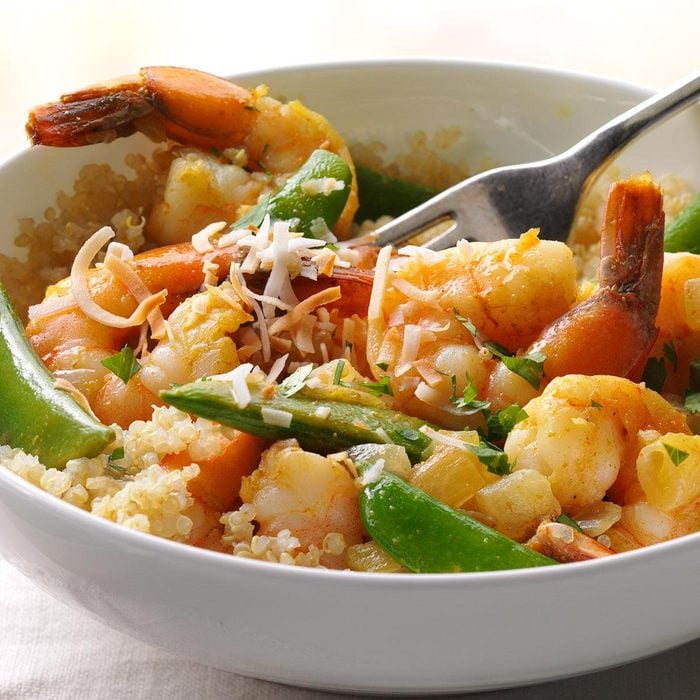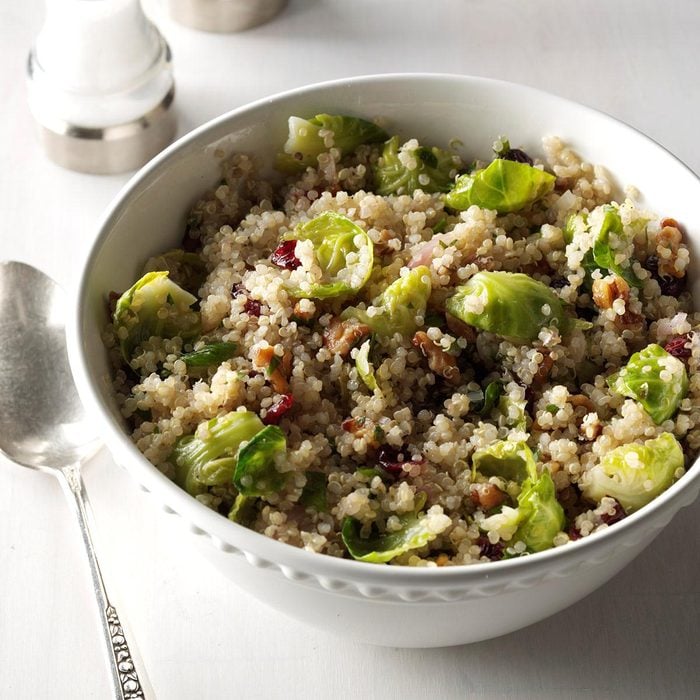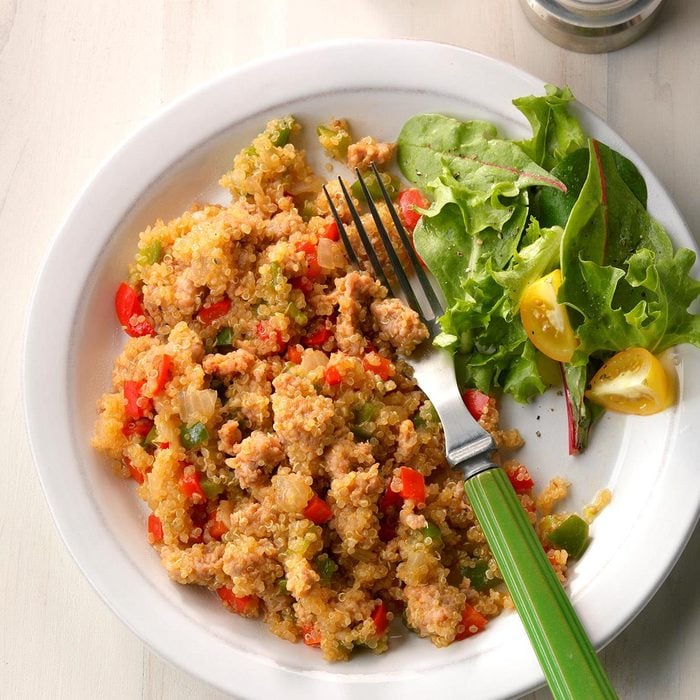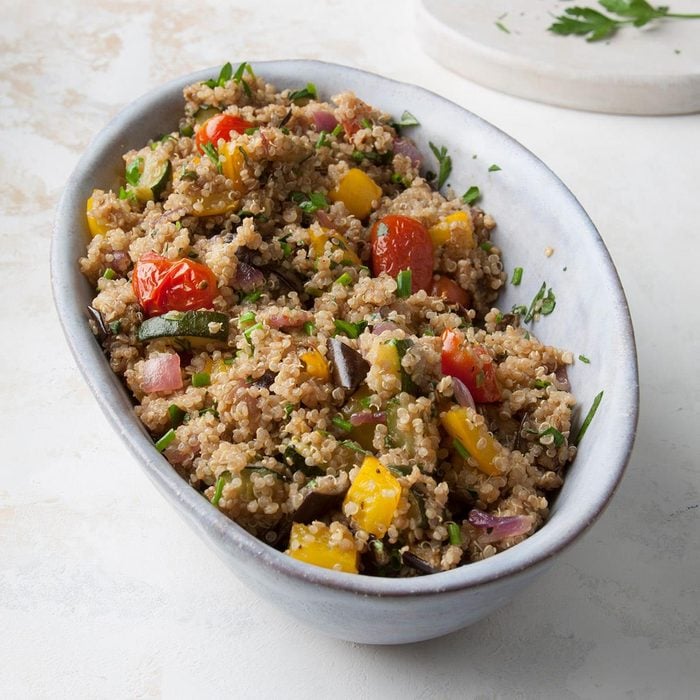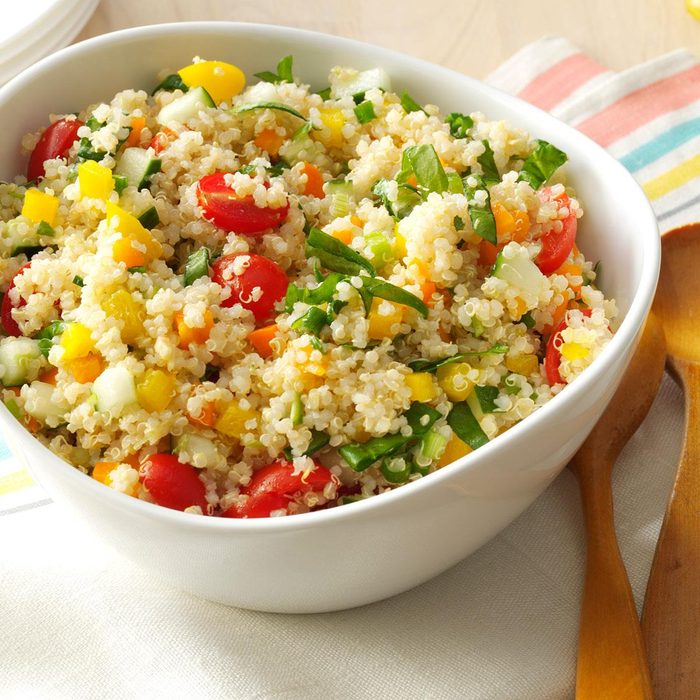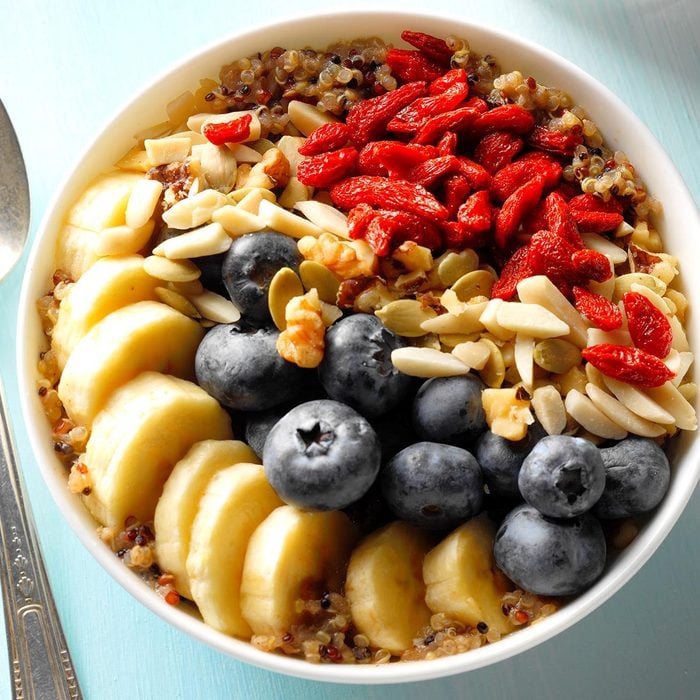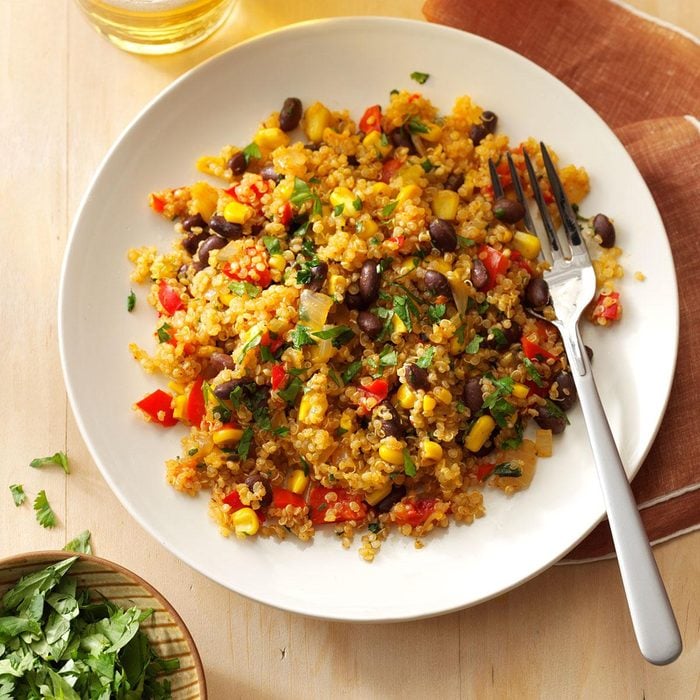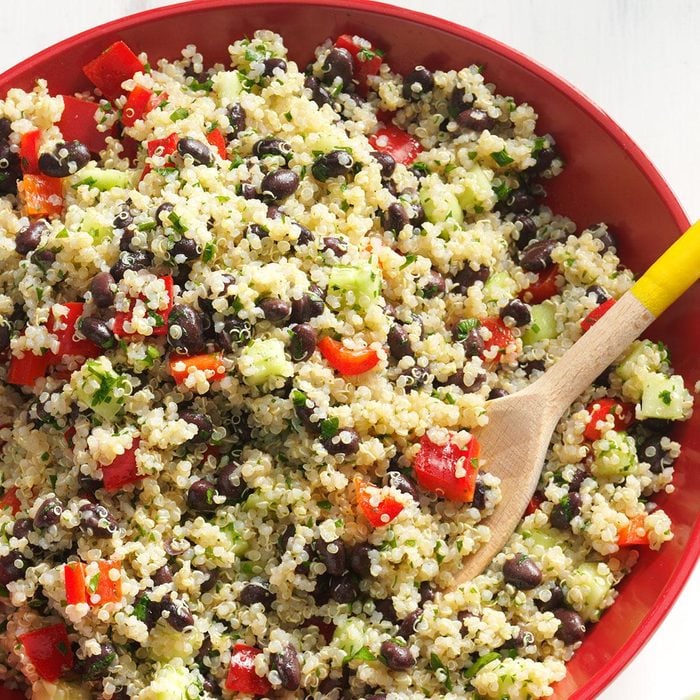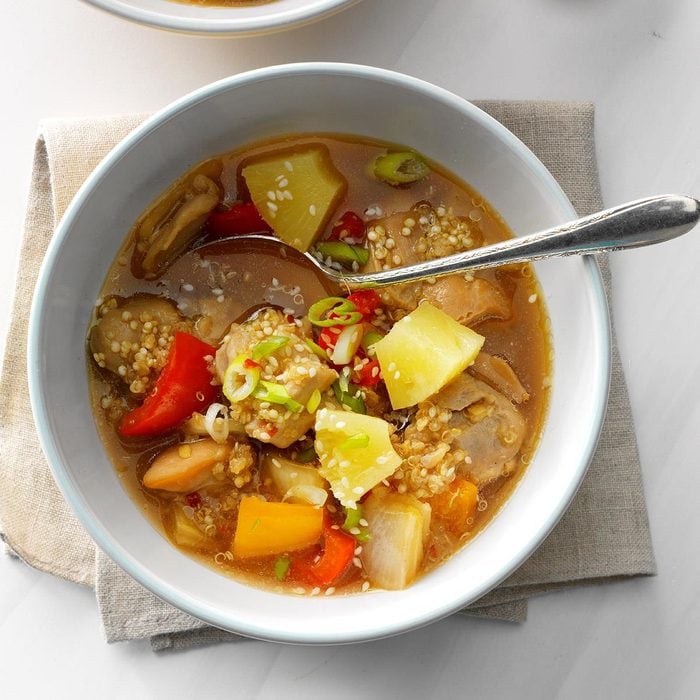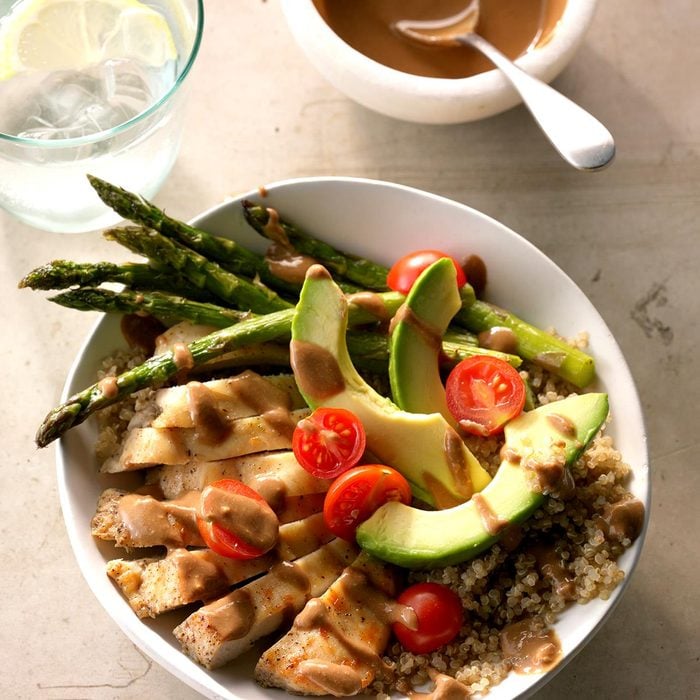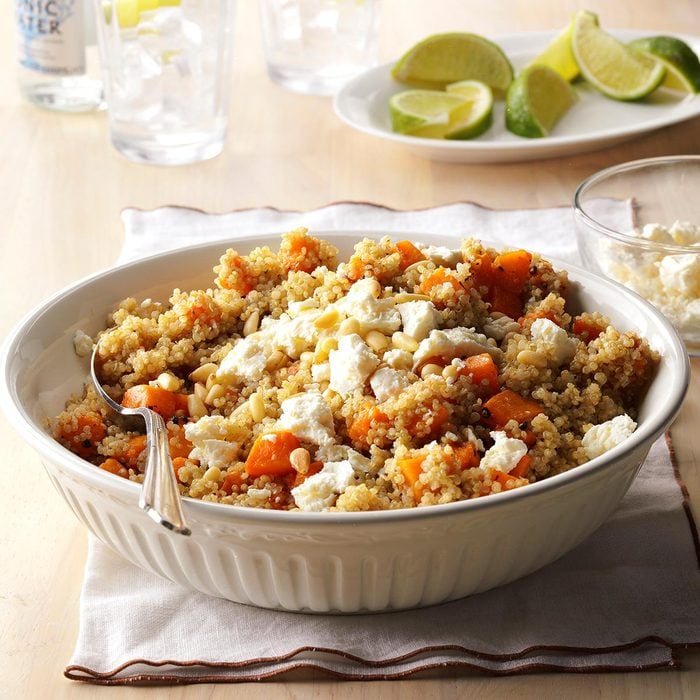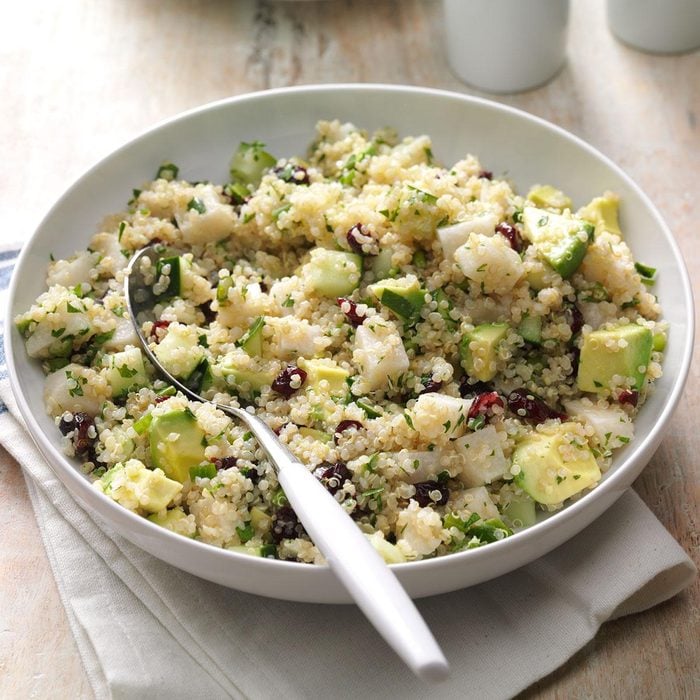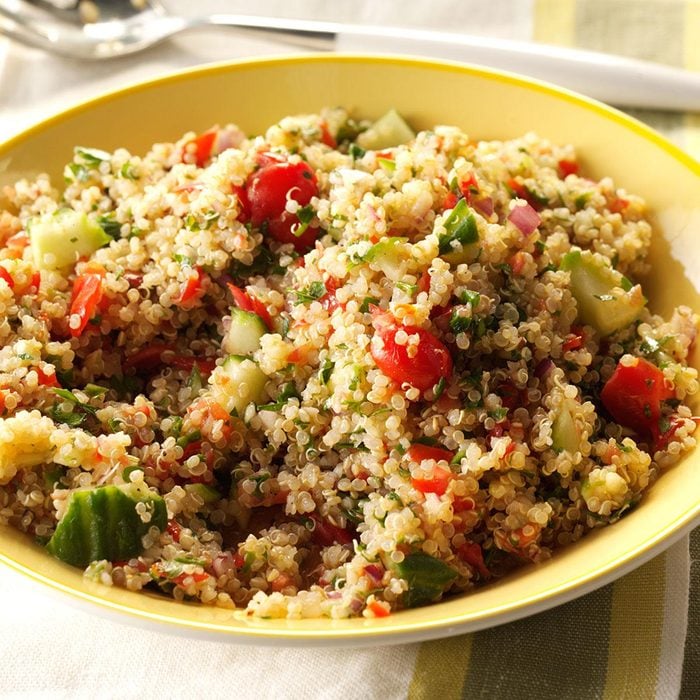Summer Salad by the Lake
I came up with this recipe to show appreciation to all the teachers at my son’s school. The dish had to be as special as the teachers, who always go the extra mile for their students. I think this salad did the trick! It's hearty, earthy, sweet and loaded with nothing but good stuff. —Ramya Ramamurthy, Fremont, California
Go To Recipe
Orange-Pistachio Quinoa SaladAdd this fresh and healthy quinoa salad to your dinner spread. Its citrusy, nutty taste is simply delicious. —Jean Greenfield, San Anselmo, California
Quinoa-Pear Breakfast BakeMy husband and I enjoy quinoa, so I created this healthy pear breakfast bake for our Sunday brunch. The quinoa is a nice change of pace from oatmeal. —Sue Gronholz, Beaver Dam, Wisconsin
Cumin Quinoa PattiesThese easy burgers taste amazing, and the quinoa gives them a hearty texture. They’re a delicious (and healthy!) vegetarian option that you really have to try. Pan frying them adds a perfect crunch that takes them to the next level. You can make the mixture ahead of time. It freezes very well. Enjoy! —Beth Klein, Arlington, Virginia
Kale Quinoa SaladHere's a healthy side dish you can feel good about serving. Kale packs a mighty punch of vitamins, while quinoa delivers a hearty serving of protein. Best of all, the flavor of this kale quinoa salad can't be beat! —Lisa Warren, Washington, DC
If this is your first time cooking quinoa, don't worry; here's a quick guide on
how to cook quinoa.
Quinoa, Fresh Fig and Honey-Balsamic ParfaitThis healthy quinoa yogurt parfait is special to me because of its wholesome ingredients. Quinoa is gluten-free, which is good for those who have food allergies, like my daughter. And I love fresh ripe figs when they are in season. Enjoy this for breakfast or dessert. —Dawn Hutchins, St. Johns, Florida
Vegan Quinoa SaladToasting the grain before it simmers isn't essential, but it does add a pleasant nuttiness to the flavor of this healthy vegan quinoa salad. Mix and match whatever fresh herbs and veggies you have on hand. —Taste of Home Test Kitchen, Milwaukee, Wisconsin
Discover more of our favorite
vegan recipes.
Skinny Quinoa Veggie DipDon’t let the name fool you. This good-for-you recipe may appeal to an athlete in training, but it has plenty of flavor to satisfy everyone. We use crunchy cucumber slices for dippers. —Jennifer Gizzi, Green Bay, Wisconsin
BLT Quinoa BowlsI absolutely love a BLT with sliced avocado and an egg. Recently, I've been trying out healthy quinoa bowls, and I thought the flavors of my favorite sandwich would work really well. My family agreed! —Elisabeth Larsen, Pleasant Grove, Utah
Apple-Cinnamon Quinoa PancakesMy daughter and daughter-in-law got me hooked on quinoa. I dressed up a regular pancake recipe to create these delicious apple-cinnamon breakfast treats. The shredded apple remains slightly crunchy with the short cooking time, and it nicely complements the chewy texture of the quinoa. —Sue Gronholz, Beaver Dam, Wisconsin
Chickpea Tortilla SoupThis vegan tortilla soup recipe is healthy, filling and family-friendly! We love how hearty and flavorful it is. We like to play around with the different toppings we add each time it's served. —Julie Peterson, Crofton, Maryland
(Aside from quinoa, here are other
healthy pantry staples to stock up on.)
Quinoa with Peas and OnionEven picky eaters will love this protein-packed dish. If you have freshly shelled peas on hand, substitute them for the frozen. —Lori Panarella, Phoenixville, Pennsylvania
Quinoa-Stuffed Squash BoatsMy colorful “boats” with quinoa, garbanzo beans and pumpkin seeds use delicata squash, a winter squash with edible skin that’s cream-colored with green stripes. In a pinch, acorn squash will do—but don't eat the skin! —Lauren Knoelke, Milwaukee, Wisconsin
Curried Quinoa SaladQuinoa is such a fantastic salad base—it's full of protein, it adds a nutty flavor, and it's the perfect vehicle to soak up any kind of dressing. If you like a little more heat, add more cayenne or curry to the dressing. —Shannon Dobos, Calgary, Alberta
Apple Quinoa Spoon BreadMy cousin is a strict vegetarian, so creating satisfying veggie dishes is my yearly challenge. This spoon bread can act as an amazing Thanksgiving side, but the addition of hearty, healthy quinoa and vegetables make it a well-rounded casserole. Pair it with a seasonal salad to make a filling vegetarian meal. —Christine Wendland, Browns Mills, New Jersey
Chicken Quinoa SaladWe pile our favorite gyro fixin’s into nutritious quinoa bowls. Our local gyro guy has a cool but spicy sauce that transforms his sandwiches. It’s a must here, too. —Leah Lyon, Ada, Oklahoma
Spiced Blueberry QuinoaI took up eating quinoa when I found out how much protein it has. This is really an easy dish to experiment with; my first version of the recipe was made with shredded apples instead of blueberries. It's just as delicious! —Shannon Copley, Upper Arlington, Ohio
California QuinoaI’m always changing this salad up. Here I used tomato, zucchini and olives for a Greek-inspired salad. Try adding a few more favorite fresh veggies you know your family will love. —Elizabeth Lubin, Huntington Beach, California
Vegan Tortilla SoupQuinoa may be an unconventional ingredient, but it adds protein in this vegan tortilla soup, making it hearty enough for a main dish. —Taste of Home Test Kitchen, Milwaukee, Wisconsin
Avocado & Garbanzo Bean Quinoa SaladThis delicious quinoa avocado salad is high in protein and holds well in the fridge for a few days. If you make it ahead, add avocados and tomatoes right before serving. —Elizabeth Bennett, Seattle, Washington
Quinoa & Black Bean Stuffed PeppersIf you're thinking about a meatless meal, give these no-fuss peppers a try. They come together with just a few ingredients and put a tasty spin on a low-fat dinner! —Cindy Reams, Philipsburg, PA
Strawberry-Quinoa Spinach SaladWe make quinoa with spinach and strawberries year-round, but it's most fun when we go to the farmers market to get the season’s first berries. —Sarah Johnson, Indianapolis, Indiana
Confetti QuinoaIf you have never tried quinoa, start with my easy side, brimming with colorful veggies. I serve it with orange-glazed chicken. —Kim Ciepluch, Kenosha, Wisconsin
Pea Soup with QuinoaThis soup is low in fat, high in fiber, and has a fantastically fresh flavor and wonderful texture. Best of all, it’s so simple to make. —Jane Hacker Milwaukee, Wisconsin
Spicy Coconut Shrimp with QuinoaHelp yourself to a plate full—generous servings are still lower in calories and big on protein. If you have company, you can add a salad and call it a day. —Keri Whitney, Castro Valley, California
Brussels Sprouts & Quinoa SaladWith Brussels sprouts for the green and cranberries for the red, I make a cheery Christmastime salad. Refreshing and versatile, it works with any kind of nut or dried fruit. —Cameron Stell, Los Angeles, California
Quinoa Unstuffed PeppersThis deconstructed stuffed pepper dish packs a wallop of flavor. I truly make it all the time, and I make sure my freezer is stocked with single-serve portions to take to work. —Rebecca Ende, Phoenix, New York
Quinoa with Roasted VegetablesGrab all of your garden-fresh produce for this quinoa with roasted vegetables. The tangy dressing and fresh herbs really make the flavors shine in this wholesome quinoa side dish. —Sonali Ruder, New York, New York
Colorful Quinoa SaladMy youngest daughter recently learned she has to avoid gluten, dairy and eggs, which gave me a new challenge in the kitchen. I put this dish together as a side we could all share. We love it for leftovers too. —Catherine Turnbull, Burlington, Ontario
Loaded Quinoa Breakfast BowlAfter I was diagnosed with multiple sclerosis in 2001, I embarked on a journey to improve my diet and live a healthier lifestyle. I began developing recipes that were not only satisfying, but also anti-inflammatory and highly nutritious. —Chantale Michaud, Guelph, Ontario
Black Bean & Corn QuinoaSome vegan quinoa recipes are boring, but this one definitely isn't. My daughter’s college asked parents for the best quinoa recipes to use in the dining halls. This healthy quinoa recipe fits the bill. —Lindsay McSweeney, Winchester, Massachusetts
Quinoa TabboulehWhen my mom and sister developed several food allergies, we had to modify many recipes. I substituted quinoa for couscous in this tabbouleh. Now we make quinoa tabbouleh all the time! —Jennifer Klann, Corbett, Oregon
Ginger Chicken and Quinoa StewThis Asian-inspired one-pot chicken dinner is healthy and tasty. You can serve it hot, cold or at room temperature. &mash; Doris Kwon, Newport Coast, California
Chicken Quinoa Bowls with Balsamic DressingI love this recipe because its simplicity allows me to spend time with my family while not sacrificing taste or nutrition. Plus the fresh spring flavors really shine through! —Allyson Meyler, Greensboro, North Carolina
Curried Chicken SkilletThis protein-packed skillet dish is loaded with bright flavor. A little curry and fresh ginger make the veggies, chicken and quinoa pop. —Ruth Hartunian-Alumbaugh, Willimantic, Connecticut
Warm Squash & Quinoa SaladWhenever I see butternut squash at the supermarket, I buy one. It's amazing tossed with earthy quinoa, Italian spices and crunchy pine nuts. And don't get me started on the browned butter! Yum. —Carly Taylor, Libertyville, Illinois
Lemon Cranberry Quinoa SaladAs the family cook, I appreciate how easy this is to throw together on a busy weeknight. Plus, this salad never gets boring. One of my favorite variations is to substitute diced fresh mango for the cranberries, cilantro for the parsley, and lime for the lemon juice and zest. —Mary Shenk, DeKalb, Illinois
Quinoa Tabbouleh SaladIn our new cookbook “The Kitchen Decoded,” we include tabbouleh salad because it's super simple and filling. Try red quinoa for a slightly earthier flavor. —Logan Levant, Los Angeles, California


